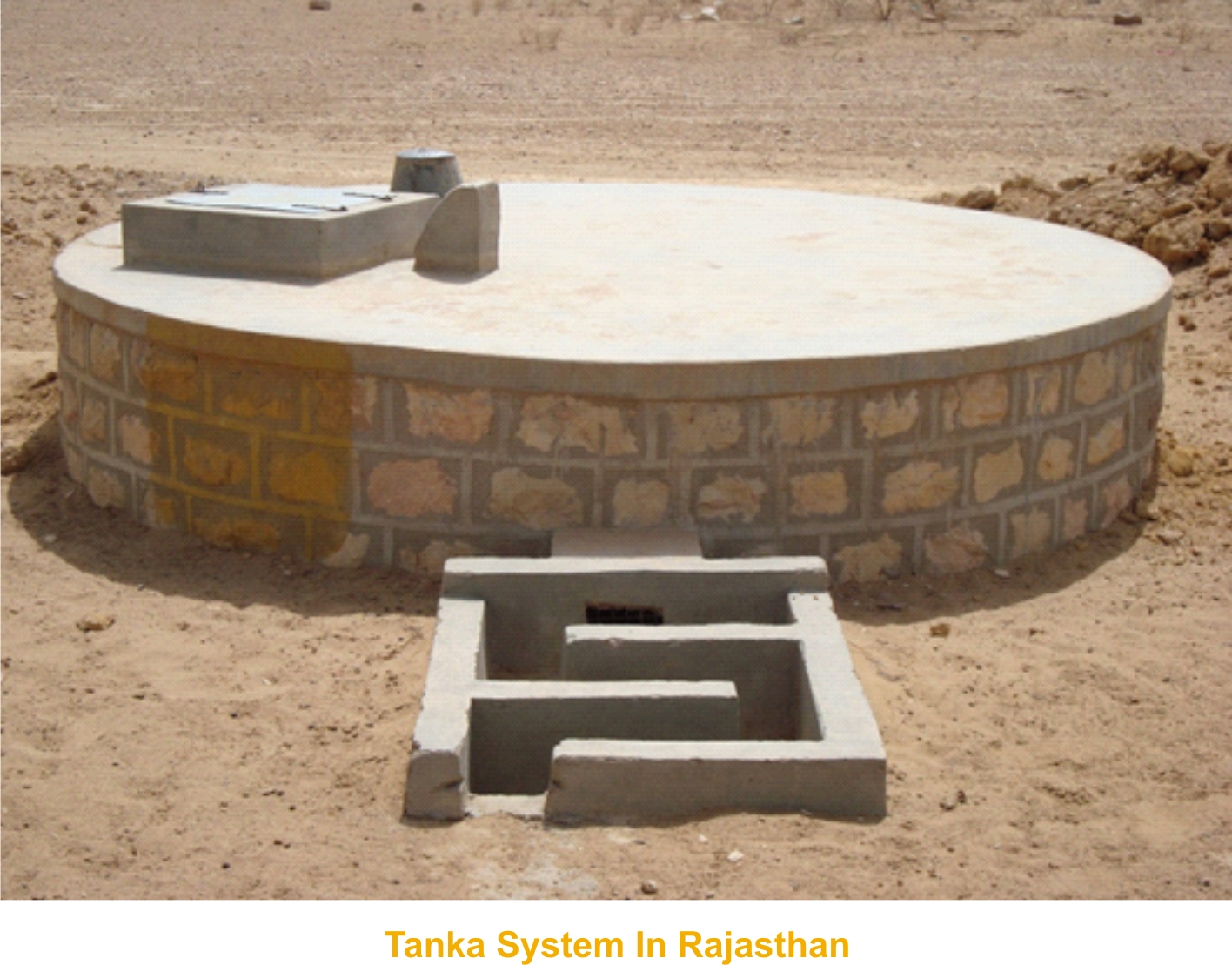|
Traditional Knowledge
Systems to “Even in the 25th century, Rajasthan will continue to use indigenous methods of water conservation. The knowledge they have gained through experience is revered. Any attempt to introduce non-indigenous technology is bound to fail.”
– Anupam Mishra
Climate
change is leading to abrupt weather events and disasters such as sudden
extreme rainfall in some areas and drought and desertification in other
places. In light of the Paris Agreement and India signing and ratifying
the Sendai framework, it is imperative to solve the complex issues that
disasters and climate change pose to the current and future generations
and the environment. Disaster reduction in the world is being looked at
from a new perspective. There is a major shift from the emphasis on
disaster response to disaster reduction, and this seeks to promote a
‘culture of prevention’. To enable all communities to become resilient
to the effects of climate induced hazards and reduce the compound risks
they pose, we must go back to our original systems of knowledge. While
climate change and its impacts are inevitable, there are many technical
measures supplemented by traditional practices that can reduce the
extent or severity of disasters. Hazards and emergency requirements are
a part of living with nature, but human behaviour can be changed.
Disaster risk reduction requires a multi-hazard approach and inclusive
risk-informed decision-making based on science complemented by
traditional knowledge. To take cognizance of climate induced disasters that are being slowly felt across the world, the World Conference on Disaster Risk Reduction has been conducted three times since 1994. In the second conference held in Kobe, Japan in 2005, it was mandated that an action plan to mitigate the risk of disasters and manage them should take centre stage. The Hyogo Framework established at the conference provided the guideline to all the countries to prepare their action plans. India formulated it’s Disaster Management Act in the same year (DM Act, 2005) for effective disaster management at the national, state, district and local levels. This Act set up institutions which helped facilitate a paradigm shift from the relief-centric approach to a more proactive, holistic and integrated approach of disaster preparedness, mitigation and emergency response. Rajasthan was the first state in India to formulate a State and District Level Disaster Management Plan in 2006. The problem is that even today i.e. 12 years later, the district level plans lack a structured thought process and evidence-based planning for building resilience in the local communities. Rajasthan being a drought prone region faces increased risk due to the changing climate. Over the last few years, the state has been experiencing flash floods and intense rainfall for shorter periods in certain parts. The impacts of climate change range from fall in farm yield to water and food shortage. The saving grace is that Rajasthan has a rich repository of traditional knowledge that can help people deal with such situations (Singhi and Joshi, 2010). Some key areas of this knowledge especially with regards to climate forecasting and disaster prediction have great relevance in the context of climate change (Pareek and Trivedi, 2011). It is important that the local indigenous people, through their experience and traditional knowledge provide an important contribution to the development and implementation of disaster risk governance plans.
Indigenous knowledge is the accumulated
knowledge that is unique and local to a particular culture or society.
Indigenous people have a general idea of how to live sustainably and
cope up with extreme habitat conditions. It is important that such
knowledge systems are rejuvenated in the communities as they can lead to
the development of effective adaptation strategies that are
cost-effective, participatory and sustainable (Robinson and Herbert,
2001). Moreover, the Sendai Framework for Disaster Risk Reduction
recommends the use of traditional, indigenous and local knowledge and
practices to complement disaster risk assessment. It even suggests the
development and implementation of policies, strategies, plans and
programmes of specific sectors with the help of traditional knowledge
tailored to the local context (SFDRR, 2015). With regards to water management, there are efficient traditional water harvesting systems in Rajasthan that demonstrate native knowledge and expertise. A good example are the wells in Rajasthan’s Alwar District. When these dried up, it resulted in pushing people into inescapable poverty. The revival of traditional earthen dams to capture rainwater for recharging the underground water supply provided a tipping point that brought the wells back to life (Gupta and Singh, 2011). The Rajasthan State Disaster Management Plan mentions that over time, the traditional water harvesting systems of Rajasthan such as Para, Beri, Kui, Johad, Nadi, Toba, Jhalara, Tanka etc. have degraded due to lack of maintenance. The plan states that they should be revived as part of the drought coping mechanism. The State Action Plan on Climate Change also recommends the revival of the traditional rain water harvesting structures in rural areas for water conservation. A bottom up approach, where data is collected from the village level is required for formulating comprehensive, structured and efficient disaster management action plans at the district and state levels. Adequate support to every village needs to be provided in the form of regular visits, video-conferencing and consultation with experts while they are in the process of formulating the village level action plans. It is also important to conduct sensitisation and capacity building workshops for spreading awareness on the relation between climate change and disasters as well as the new water conservation techniques that can be used along with the existing traditional water harvesting structures. Engaging with educational institutions to impart this traditional knowledge and the need for water conservation is imperative to prepare the future generations who would be facing the brunt of climate induced disasters. The accumulation and updation of knowledge and practices will also help inform policy focusing on water regulation in the context of climate change.
References
Syed A A Farhan |

